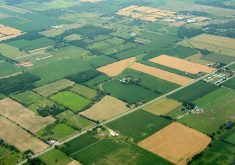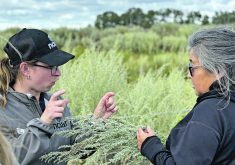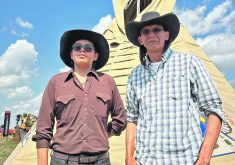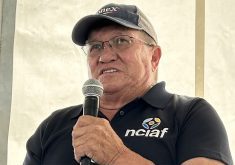The Canadian Agricultural Human Resource Council initiative is intended to help Indigenous people develop farming skills
The Canadian Agricultural Human Resource Council has announced the creation of the Indigenous Agriculture Advisory Committee.
CAHRC said the committee will advise it about the seven grandfather teachings: love, respect, bravery, truth, honesty, humility and wisdom.
“This land, we’ve got a different connection to it,” said committee member Ken Bear from Ochapowace First Nation.
“I’m not meaning it’s a different connection. I’m just saying it’s not fully understood.”
The committee’s main goal is to “guide work related to supporting workforce development in Indigenous agriculture, advise CAHRC on engagement, research and tool development related to skill development in Indigenous agriculture and provide an Indigenous lens to CAHRC’s work,” CAHRC said in a news release.
Read Also

Volatile temperatures expected for this winter
DTN is forecasting a lot of temperature variability in the Canadian Prairies this winter. Precipitation should be close to average.
CARHC said input from the committee will be crucial to the success of the National Workforce Strategic Plan by ensuring that an Indigenous lens is placed across CAHRC’s workforce development programs and services.
Bear and chair member Dale Worme from have been given a spot on this committee because they have experience as founding members of the National Indigenous Agriculture Association.
The two hope the CAHRC partnership can help them accomplish what the NIAA set out to do.
“My number one priority is that we connect with anyone in agriculture if they can assist us, if we can help each other in promoting agriculture amongst Indigenous peoples,” said Worme.
Jennifer Wright, executive director at CAHRC, said it’s important that the organization has an Indigenous lens.
“We as an organization needed the guidance from an Indigenous advisory committee as we develop programs, research, and tools that are relevant to the unique needs and opportunities of Indigenous agriculture,” she said.
In 2018, the NIAA conducted research on Cowessess First Nation and five other Indigenous communities.
The report found that the Canadian Agricultural Loans Act (CALA) program is not available for loans on reserve land.
Because of this, Indigenous farmers and communities can’t get the 95 percent government loan guarantee with interest rates of prime-plus-one that the CALA program provides.
“It’s something that can only be changed through legislation,” said Worme. “I think it’s a legislative act and has to be changed because it is discriminatory.”
As a result, agriculture was made difficult for Indigenous farmers. The systemic barriers were too much, and many agricultural teachings have been lost.
“The main goal is to get a viable agricultural industry and our economy going on the reserve,” said Worme, “which was the original intent of the treaties.”
“One thing NIAA can do is partner with organizations that can help producers on the reserve,” said Worme. “There needs to be this basic training that needs to be done.”















